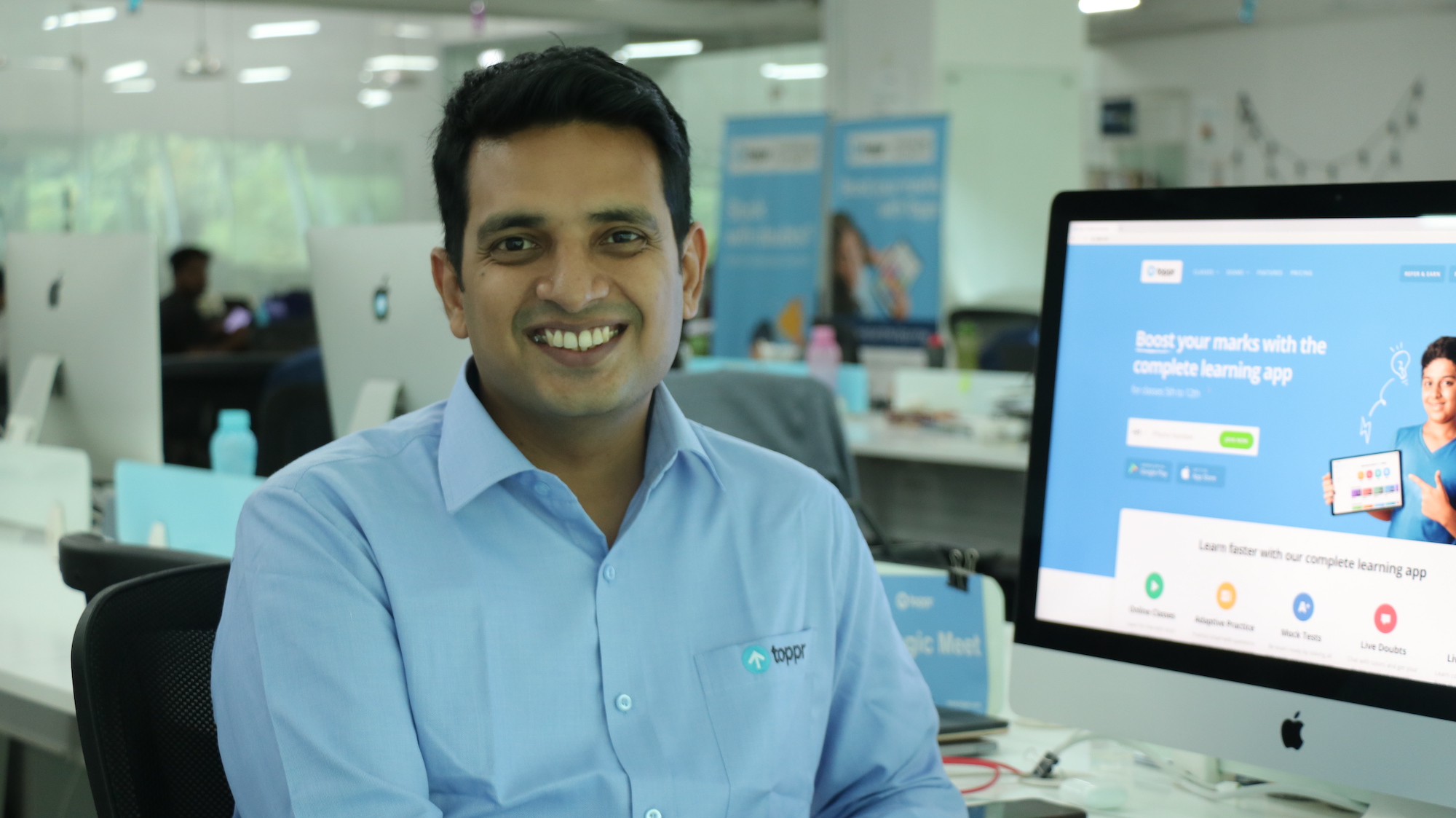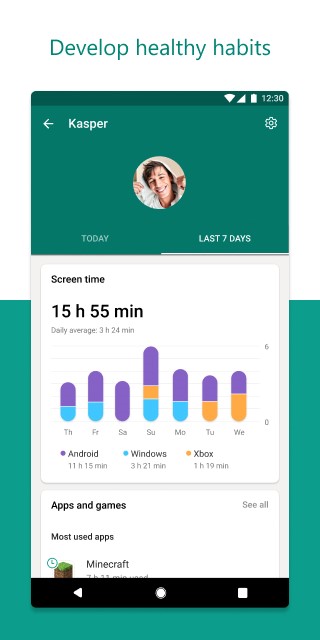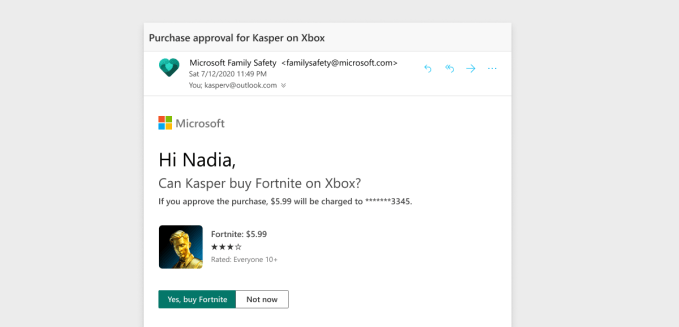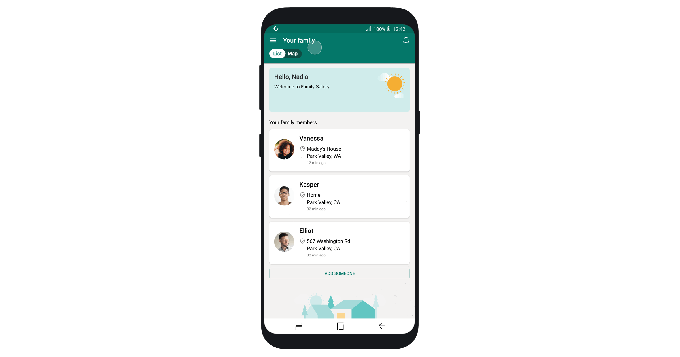In March, Brooklynite Jeremy Cohen achieved minor internet fame when he launched an elaborate scheme to court Tori Cignarella, a cute stranger living in a nearby building.
After spotting Cignarella across an air shaft, Cohen used drones, Venmo, texting and FaceTime to interact with his socially distanced crush. But it was on their second date when Cohen pulled out all the stops. He purchased a gigantic plastic bubble, sealed himself inside and invited his new friend to go on a touchless walk. As Cohen wrote on Instagram, “just because we have to social distance doesn’t mean we have to be socially distant.”
Cohen’s quirky, DIY approach made for fun clickbait for a few days. But it’s also a somewhat unflattering metaphor for the kinds of touch-centric entrepreneurialism that has proliferated in the age of COVID-19. From dating to banking, education to retail, the virus has pushed everyone to rethink how touch and proximity factor into daily interactions. Businesses besieged by the uncertainty of shutdown orders, partial re-openings, remote work, disease spikes and changing consumer behavior have been forced to test-drive solutions on the fly.
Amid that confusion, a few common approaches have emerged. Some are rushing to return to normalcy, adopting quick fixes at the expense of more broad-based solutions. Others are using the pandemic as an excuse to accelerate technological shifts, even those that may be unwelcome, impractical or both. Still others are enforcing guidelines selectively or not at all, tempting consumers back, in part, through the promise of “normal” (read: non-distanced and non-regulated) interactions.
Enter haptics. Investment in touch technologies had been on the rise before COVID-19, with virtual reality fueling fresh interest in haptic gloves and full-body suits, and haptics for mobile devices like wearables and smartwatches infusing the field with new resources. While it is difficult to capture the health and growth of the haptics industry with a single number, one estimate puts the global haptics market at US$12.9 billion in 2020, projected to grow to US$40.9 billion by 2027.
In addition to established players like Immersion Corporation, founded in 1993 and active working on haptics applications ranging from gaming and automotive to medical, mobile and industrial, Sony, Apple, Microsoft, Disney and Facebook each have dedicated teams working on new haptics products. Scores of startups, too, are currently bringing new hardware and software solutions to market: Ultraleap (formerly Ultrahaptics), a Bristol-based company that develops midair haptics, has secured $85 million in funding; HaptX, which makes exoskeleton force feedback gloves for use in VR and remote manipulation, has raised $19 million in funding; and Neosensory, focused on routing sound through the skin with a wrist-based wearable Buzz, has received $16 million in funds. A recent industry-wide initiative intended to make it easier to embed haptics in multimedia content suggests that we could soon see growth in this area accelerate even further.
Despite these trends, the business of touch isn’t heading in one clear direction. And with such variety in business responses, customers have responded with confusion, frustration, anxiety and defiance. More than disgruntlement, though, COVID-19 shines a light on a longstanding debate over whether the future will have more touch or less. Tensions around touch were already high, but rapid changes, Band-Aid solutions and short-term thinking are making the problems worse.
What’s needed now is a longer view: serious, systematic thinking about where we — as consumers, citizens, humans — want and need touch, and where we don’t. To get there, we need greater investment not just in technologies that sound good, but ones that will deliver on real needs for connection and safety in the days ahead.
Plexiglass is the new mask
While the mask may be the most conspicuous symbol of the COVID-19 pandemic in much of the world, the new normal has another, clearer symbol: plexiglass.
Plexiglass leads the way as our environments are retrofitted to protect against the virus. In the U.S., demand began rising sharply in March, driven first by hospitals and essential retailers like grocery stores. Traditional sectors like automotive are using much less of the stuff, but that difference is more than made up for by the boom among restaurants, retail, office buildings, airports and schools. Plexiglass is even popping up in temples of bodily experience, surrounding dancers at strip clubs, clients at massage parlors and gymgoers in fitness centers.
Like plexiglass itself, the implications for touch are stark, if invisible. Plexiglass may communicate sterility and protection — though, truth be told, it dirties often and it’s easy to get around. More to the point, it puts up a literal barrier between us.
The story of plexiglass — like that of single-use plastic, ventilation systems, hand sanitizer and ultraviolet light — underscores how mundane interventions often win the day, at least initially. It is much easier for a grocery store to install an acrylic sneezeguard between cashiers and customers than it is to adopt contactless shopping or curbside pickup. At their best, interventions like plexiglass are low-cost, effective and don’t require huge behavior changes on the part of customers. They are also largely reversible, should our post-pandemic lifestyles revert back to something more closely resembling our previous behaviors.
Besides their obvious environmental consequences, plasticized approaches can erode our relationship to touch and thereby to each other. In Brazil, for example, some nursing homes have installed “hug tunnels” to allow residents to embrace family members through a plastic barrier. Given that “when will I be able to hug my loved ones again?” is a common and heart-wrenching question these days, the reunions hug tunnels facilitate are, well, touching. But as a shadow of the real thing, they amplify our desperate need for real connection.
The same with circles on the floor in elevators or directional arrows down store aisles: In expecting us to be our best, most rational and most orderly selves, they work against cultural inclinations toward closeness. They indicate not so much a brave new future as a reluctant present. And without proper messaging about their importance as well as their temporariness, they are bound to fail.
Touch tech to the rescue
To feed our skin hunger, futurists are pushing haptic solutions — digital technologies that can replicate and simulate physical sensations. Haptics applications range from simple notification buzzes to complex whole-body systems that combine vibration, electricity and force feedback to re-create the tactile materiality of the physical world. But although the resurgence of VR has rapidly advanced the state of the art, very few of these new devices are consumer-ready (one notable exception is CuteCircuit’s Hug Shirt — released for sale earlier this year after 15+ years in development).
Haptics are typically packaged as part of other digital techs like smartphones, video game controllers, fitness trackers and smartwatches. Dedicated haptic devices remain rare and relatively expensive, though their imminent arrival is widely promoted in popular media and the popular technology press. Effective haptic devices, specially designed to communicate social and emotional touch such as stroking, would seem particularly useful to re-integrate touch into Zoom-heavy communication.
Even with well-resourced companies like Facebook, Microsoft and Disney buying in, these applications will not be hitting home offices or teleconferencing setups anytime soon. Though it would be easy to imagine, for example, a desktop-mounted system for facilitating remote handshakes, mass producing such devices would prove expensive, due in part to the pricey motors necessary to accurately synthesize touch. Using cheaper components compromises haptic fidelity, and at this point, what counts as an acceptable quality of haptic simulation remains ill-defined. We don’t have a tried and tested compression standard for haptics the way we do with audio, for instance; as Immersion Corporation’s Yeshwant Muthusamy recently argued, haptics has been held back by a problematic lack of standards.
Getting haptics right remains challenging despite more than 30 years’ worth of dedicated research in the field. There is no evidence that COVID is accelerating the development of projects already in the pipeline. The fantasy of virtual touch remains seductive, but striking the golden mean between fidelity, ergonomics and cost will continue to be a challenge that can only be met through a protracted process of marketplace trial-and-error. And while haptics retains immense potential, it isn’t a magic bullet for mending the psychological effects of physical distancing.
Curiously, one promising exception is in the replacement of touchscreens using a combination of hand-tracking and midair haptic holograms, which function as button replacements. This product from Bristol-based company Ultraleap uses an array of speakers to project tangible soundwaves into the air, which provide resistance when pressed on, effectively replicating the feeling of clicking a button.
Ultraleap recently announced that it would partner with the cinema advertising company CEN to equip lobby advertising displays found in movie theaters around the U.S. with touchless haptics aimed at allowing interaction with the screen without the risks of touching one. These displays, according to Ultraleap, “will limit the spread of germs and provide safe and natural interaction with content.”
A recent study carried out by the company found that more than 80% of respondents expressed concerns over touchscreen hygiene, prompting Ultraleap to speculate that we are reaching “the end of the [public] touchscreen era.” Rather than initiate a technological change, the pandemic has provided an opportunity to push ahead on the deployment of existing technology. Touchscreens are no longer sites of naturalistic, creative interaction, but are now spaces of contagion to be avoided. Ultraleap’s version of the future would have us touching air instead of contaminated glass.
Touch/less
The notion that touch is in crisis has been a recurring theme in psychology, backed by scores of studies that demonstrate the negative neurophysiological consequences of not getting enough touch. Babies who receive insufficient touch show higher levels of the stress hormone cortisol, which can have all kinds of negative effects on their development. In prisons, for example, being deprived of touch through restraint or solitary confinement is a punishment tantamount to torture. As technology continues to make inroads into our lives, interactions that once required proximity or touch have become mediated instead, prompting ongoing speculation about the consequences of communicating by technology rather than by touch.
The coronavirus pandemic intensifies this crisis by demanding a sudden, collective withdrawal from physical contact. The virus lays a cruel trap: the longer we’re apart, the more we crave togetherness and are willing to take dangerous risks. But giving in to the desire to touch not only exposes us and those we care about to a potentially mortal danger, it also extends the amount of time before we can resume widespread touching.
The pandemic has already revealed important lessons about touch, haptics and humanity. First is that while circumstances can change quickly, true social and behavioral change takes longer. The many examples of Americans acting as though there is no pandemic going on should give pause to anyone thinking touch-free futures are just around the corner. Atop this, there is plain-old inertia and malaise, which suggests some pandemic-era interventions will stick around while others will disappear or slacken over time. Consider 9/11 — nearly two decades later, though we still can’t greet our loved ones at their gate, most airports don’t strictly monitor our liquids and gels.
By the same token, one can imagine unfilled hand sanitizer stations as the ultimate hangover from these times. We may begin to like the plexiglass barriers between ourselves and our fellow subway passengers, but hate them at restaurants and sporting events. We may encounter more motion-detecting sliding doors and hand-tracking options, but when they falter we may revert to revolving doors, handles and push-buttons.
A second and equally important insight is that the past and the future exist side by side. Technological development takes even longer than behavioral change, and can be bedeviled by momentary trends, expense and technological limitations. For example, there are a lot of pressures right now to transform stores and restaurants into “last-mile” fulfillment centers, to embrace AR and VR and to reimagine space as contact-free. In these scenarios, objects could be touched and handled in virtual showrooms using high-fidelity digital touch technologies. But some of this pressure is based on promises that haptics have yet to fulfill. For instance, being able to touch clothing through a mobile phone may be possible in theory, but would be difficult in practice and would mean other trade-offs for mobile phones’ functionality, size, weight and speed.
Touch/more?
But just as the coronavirus pandemic did not create making us miss touching, it also did not create all the problems with touching. Some of the touch we were used to — like the forced closeness of a crowded subway car or the cramped quarters of airline seats — is dehumanizing. Social movements like #MeToo and Black Lives Matter have drawn attention to how unwanted touch can have traumatic consequences and exacerbate power imbalances. We must think broadly about the meaning of touch and its benefits and drawbacks for varying types of people, and not rush toward a one-size-fits-all solution. Although touch may seem like a fundamentally biological sense, its meaning is continually renegotiated in response to shifting cultural conditions and new technologies. COVID-19 is the most rapid upheaval in global practices of touching that we’ve seen in at least a generation, and it would be surprising not to see a corresponding adoption of technologies that could allow us to gain back some of the tactility, even from a distance, that the disease has caused us to give up.
Too often, however, touch technologies prompt a “gee whiz” curiosity without being attentive to the on-the-ground needs for users in their daily lives. Businesses looking to adopt haptic tech must see through the sales pitch and far-flung fantasies to develop a long-term plan for where touch and touch-free make the most sense. And haptic designers must move from a narrow focus on solving the complex engineering problem touch presents to addressing the sorts of technologies users might comfortably incorporate into their daily communication habits.
A useful exercise going forward is to consider how would we do haptic design differently knowing we’d be facing another COVID-19-style pandemic in 2030? What touch technologies could be advanced to satisfy some of the desires for human contact? How can firms be proactive, rather than reactive, about haptic solutions? As much as those working in the field of haptics may have been motivated by the noble intention of restoring touch to human communication, this mission has often lacked a sense of urgency. Now that COVID-19 has distanced us, the need for haptics to bridge that physical gap, however incompletely, becomes more obvious and demanding.
Businesses feel it too, as they attempt to restore “humanity” and “connection” to their customer interactions. Yet as ironic as it might feel, now is the time not to just stumble through this crisis — it’s time to prepare for the next one. Now is the time to build in resilience, flexibility and excess capacity. To do so requires asking hard questions, like: do we need VR to replicate the sensory world in high fidelity, even if it’s costly? Or would lower-cost and lower-fidelity devices suffice? Will people accept a technologized hug as a meaningful proxy for the real thing? Or, when touch is involved, is there simply no substitute for physical presence? Might the future have both more touch and less?
These are difficult questions, but the hardship, trauma and loss of COVID-19 proves they demand our best and most careful thinking. We owe it to ourselves now and in the future to be deliberate, realistic and hopeful about what touch and technology can do, and what they can’t.







